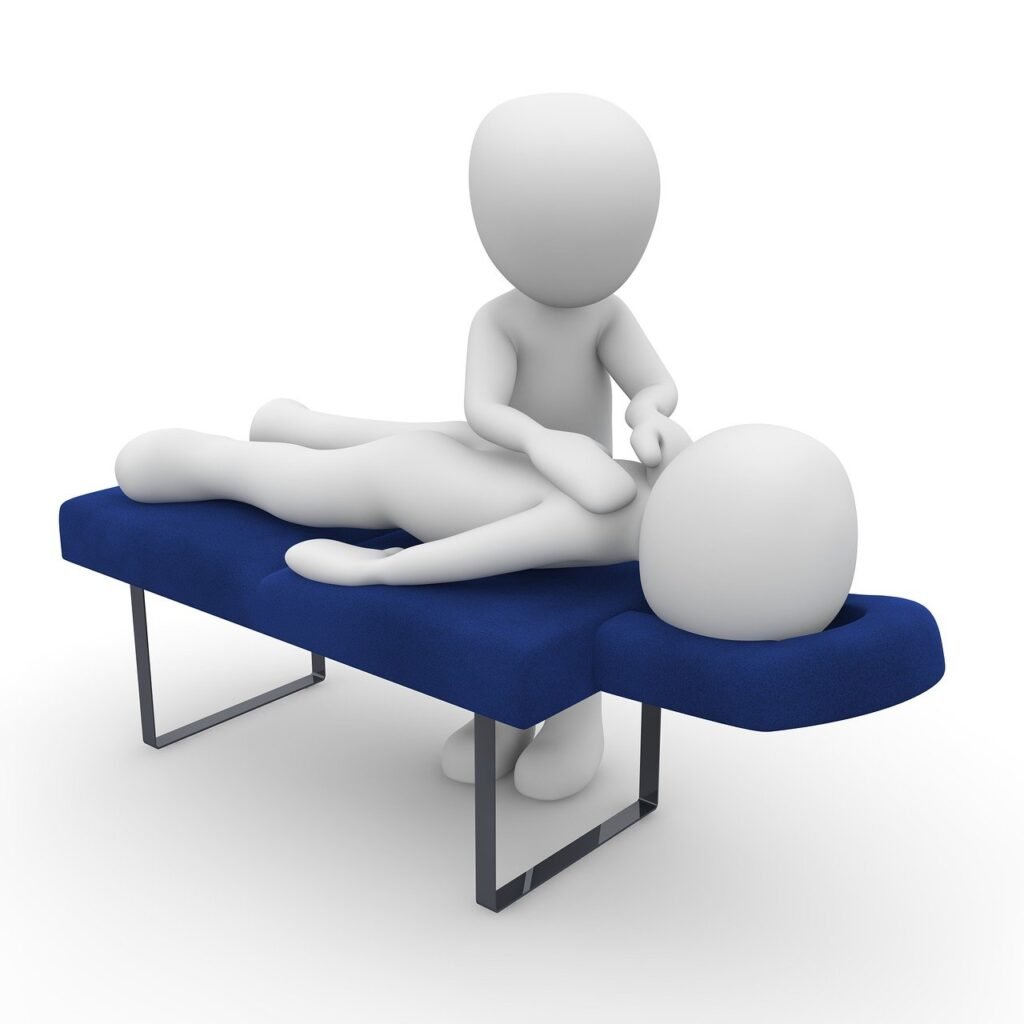Have you ever considered how a simple act like immersing yourself in cold water could affect not just your body but also your mind?
Understanding Cold Immersion
When you think about cold immersion, what comes to mind? It might be that icy plunge that people challenge themselves to take or perhaps the ritual of submerging in an ice bath after an intense workout. But cold immersion is more than just a shocking experience for your body; it’s a fascinating interplay between your physical state and mental well-being.
Cold immersion generally refers to any practice where you expose your body to cold water. This could be a quick dip in a cold lake, an ice bath post-exercise, or even a cold shower. Each of these activities activates both physiological and psychological responses that have captured significant attention in recent years.
The Science Behind Cold Immersion
Physiological Effects of Cold Exposure
When you immerse your body in cold water, several physiological processes kick into gear. The first response is vasoconstriction. Your blood vessels tighten to conserve heat, directing blood to your core organs. This helps preserve your vital organs but also triggers a multitude of other responses.
| Physiological Response | Description |
|---|---|
| Vasoconstriction | Blood vessels tighten, minimizing heat loss. |
| Increased Heart Rate | Your heart rate may spike as your body works to circulate blood. |
| Release of Endorphins | Cold water can trigger the release of endorphins, often referred to as the “feel good” hormones. |
| Enhanced Metabolism | Exposure can boost metabolic rates as your body works to maintain its core temperature. |
| Immune Response | Regular cold exposure has been linked to a more robust immune response. |
Psychological Effects of Cold Immersion
Now let’s talk about the mind. The psychological benefits of cold immersion are equally compelling. When faced with the stress of cold water, you’re forced to confront discomfort. This act can cultivate resilience and fortitude, helping you in other areas of life.
- Stress Reduction: The act of stepping into cold water can reduce cortisol levels, the primary stress hormone.
- Enhanced Mood: Many people report elevated moods after cold immersion, often attributed to the surge of endorphins.
- Increased Mental Toughness: Overcoming the initial shock of cold can lead to enhanced confidence and mental toughness.

The Interconnection of Mind and Body
The Concept of Psychosomatic Functionality
Psychosomatic refers to how the mind and body influence each other. Cold immersion exemplifies this connection beautifully. Your thoughts and emotions can significantly affect your physiological responses, and being in cold water can alter your mental state, allowing for introspection.
You might wonder how stressful situations affect you mentally and physically. When you engage in cold immersion, you learn to shift your focus from discomfort to resilience. It’s a transformative experience that shows how intimately connected your mind and body really are.
Building Resilience Through Cold Immersion
Every time you choose to immerse yourself in cold water, you are, in essence, training your mind to handle discomfort. This is particularly valuable in a world fraught with challenges, where resilience is key.
-
Mindfulness: The cold water demands your presence, pulling you into a moment of mindfulness. You become attuned to your body’s sensations, thoughts, and feelings; all inner dialogues are amplified in this silent struggle.
-
Emotional Regulation: Learning to manage the shock of cold water helps you practice emotional regulation. The next time you feel overwhelmed by stress or anxiety in life, you might recall how you managed to overcome that icy plunge.
The Role of Breath Control
The Breath-Body Connection During Immersion
Breath control plays a crucial role in your cold immersion experience. When you step into cold water, your body instinctively reacts with a gasp reflex. Learning to control your breath can significantly alter your experience, grounding you as you face the shock.
| Breath Control Technique | Description |
|---|---|
| Deep Breathing | Taking slow, deep breaths can help calm your nervous system. |
| Rhythmic Breathing | Establishing a rhythmic breathing pattern can help you manage cold shock. |
| Meditation Techniques | Combining cold immersion with meditation can enhance the mind-body connection. |
Incorporating breath control techniques allows you to manage your stress response. This practice can be applied in various situations, whether it be facing a tough task at work or managing a personal challenge. The breath becomes your ally, a tool for grounding yourself in moments of discomfort.
Examples of Breath Control Techniques
-
Box Breathing: Inhale for a count of four, hold for four, exhale for four, and hold again for four. This cycle can calm your mind during cold exposure.
-
Diaphragmatic Breathing: Focus on breathing deeply into your diaphragm instead of shallowly into your chest. It stimulates the vagus nerve and lowers your heart rate.
-
Counting Breaths: Simply counting each inhalation and exhalation can help you focus, making cold immersion feel more manageable.

Building a Cold Immersion Practice
Finding Your Cold Water Source
So, you’re intrigued by cold immersion but don’t know where to start? Finding a suitable environment is your first step. Here are some suggestions:
-
Cold Showers: A more accessible option for many. Start with warm water and gradually lower the temperature.
-
Ice Baths: If you’re familiar with post-workout recovery, this is a method often used by athletes. Consider starting with shorter durations.
-
Natural Bodies of Water: If you have access to lakes or rivers, these can be perfect for immersion. Just make sure the water is safe.
Preparing Mentally and Physically
Mental preparation is just as essential as physical readiness when it comes to cold immersion.
-
Setting Intentions: Before your immersion, articulate your goals. Why did you decide to immerse yourself? What do you hope to gain? This intention can significantly alter your experience.
-
Physical Preparation: Ensure your body feels ready. A brief warm-up can help your body cope better with the cold.
-
End with Gratitude: Once you finish your immersion, take a moment to reflect on the experience. Gratitude can enhance the psychological benefits.
The Community Aspect of Cold Immersion
Cold Immersion Challenges and Groups
Participating in cold immersion isn’t just a solitary practice; it can also be an incredible community experience. Many communities host cold immersion challenges that allow you to meet others and share your experiences.
Benefits of Group Excursions:
- Support System: It’s easier to face the cold when others are doing it alongside you.
- Motivation: The energy of a group can supercharge your willingness to take that plunge.
- Shared Stories: Everyone has their own unique journey; sharing stories can deepen your understanding and appreciation of the experience.
Online Communities and Resources
If you’re not ready to join a local group, online platforms offer vast resources, including forums, social media groups, and YouTube channels dedicated to cold immersion. These communities can provide advice, motivational tips, and answer any questions you have.
Here’s a brief overview of platforms where you can connect with fellow enthusiasts:
| Platform | Description |
|---|---|
| A thriving forum for discussing cold exposure and recovery techniques. | |
| Follow hashtags like #coldimmersion or #icebath for inspiring content. | |
| YouTube | Numerous channels focus on cold exposure and its benefits. |

Risks and Considerations
Understanding Your Limits
While cold immersion offers numerous benefits, it’s not without its risks. Understanding your body’s limits is essential to ensuring safety.
-
Hypothermia: Prolonged exposure can lead to hypothermia. If you start feeling dizzy, numb, or overly fatigued, it’s essential to exit the cold water immediately.
-
Pre-existing Conditions: Individuals with cardiovascular issues or other medical conditions should consult with a healthcare professional before engaging in cold immersion practices.
-
Gradual Adaptation: For beginners, it’s essential to start small, gradually increasing your exposure time and lowering the temperature over multiple sessions.
Safety Tips
- Buddy System: If possible, never immerse alone. Having a partner can provide you with safety and support.
- Warm-Up Strategy: Have warm clothing and blankets on hand for after the immersion to help your body return to a normal temperature.
- Stay Informed: Learn about the climate and your chosen cold water source. Conditions may vary based on season or time of day.
Final Thoughts on the Mind-Body Connection
By now, you may see cold immersion as more than just a way to shock your body; it’s a profound form of self-exploration that bridges the mind-body divide. Engaging in this practice can foster resilience, heighten awareness, and strengthen your emotional toolkit.
As you continue your journey into cold immersion, consider the deeper implications this practice can have for you. Each chilly plunge you take isn’t just a test of your physical endurance but also an opportunity for personal growth.
The Invitation
Are you ready to take the plunge? In this world filled with endless distractions and challenges, cold immersion provides a moment of clarity—both physically and mentally. It’s an invitation to understand yourself better, embrace discomfort, and celebrate your capacity for resilience.
So, why not take that first step? Your mind and body may just thank you for it.


